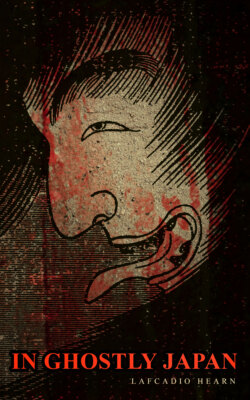Читать книгу In Ghostly Japan - Lafcadio Hearn - Страница 7
На сайте Литреса книга снята с продажи.
II
ОглавлениеCurious indeed, but enormous by reason of it infinity of tradition and detail. I am afraid even to think of the size of the volume that would be needed to cover it…. Such a work would properly begin with some brief account of the earliest knowledge and use of aromatics in Japan. I would next treat of the records and legends of the first introduction of Buddhist incense fron Korea,—when King Shomyo of Kudara, in 551 A. D., sent to the island-empire a collection of sutras, an image of the Buddha, and one complete set of furniture for a temple. Then something would have to be said about those classifications of incense which were made during the tenth century, in the periods of Engi and of Tenryaku,—and about the report of the ancient state-councillor, Kimitaka-Sangi, who visited China in the latter part of the thirteenth century, and transmitted to the Emperor Yomei the wisdom of the Chinese concerning incense. Then mention should be made of the ancient incenses still preserved in various Japanese temples, and of the famous fragments of ranjatai (publicly exhibited at Nara in the tenth year of Meiji) which furnished supplies to the three great captains, Nobunaga, Hideyoshi, and Iyeyasu. After this should fol-low an outline of the history of mixed incenses made in Japan,—with notes on the classifications devised by the luxurious Takauji, and on the nomenclature established later by Ashikaga Yoshimasa, who collected one hundred and thirty varieties of incense, and invented for the more precious of them names recognized even to this day,—such as "Blossom-Showering," "Smoke-of-Fuji," and "Flower-of-the-Pure- Law." Examples ought to be given likewise of traditions attaching to historical incenses preserved in several princely families, together with specimens of those hereditary recipes for incense- making which have been transmitted from generation to generation through hundreds of years, and are still called after their august inventors,—as "the Method of Hina-Dainagon," "the Method of Sento-In," etc. Recipes also should be given of those strange incenses made "to imitate the perfume of the lotos, the smell of the summer breeze, and the odor of the autumn wind." Some legends of the great period of incense-luxury should be cited,—such as the story of Sue Owari-no-Kami, who built for himself a palace of incense-woods, and set fire to it on the night of his revolt, when the smoke of its burning perfumed the land to a distance of twelve miles…. Of course the mere compilation of materials for a history of mixed-incenses would entail the study of a host of documents, treatises, and books,—particularly of such strange works as the Kun-Shu-Rui-Sho, or "Incense-Collector's Classifying-Manual";—containing the teachings of the Ten Schools of the Art of Mixing Incense; directions as to the best seasons for incense-making; and instructions about the "different kinds of fire" to be used for burning incense—(one kind is called "literary fire," and another "military fire"); together with rules for pressing the ashes of a censer into various artistic designs corresponding to season and occasion…. A special chapter should certainly be given to the incense-bags (kusadama) hung up in houses to drive away goblins,—and to the smaller incense-bags formerly carried about the person as a protection against evil spirits. Then a very large part of the work would have to be devoted to the religious uses and legends of incense, —a huge subject in itself. There would also have to be considered the curious history of the old "incense-assemblies," whose elaborate ceremonial could be explained only by help of numerous diagrams. One chapter at least would be required for the subject of the ancient importation of incense-materials from India, China, Annam, Siam, Cambodia, Ceylon, Sumatra, Java, Borneo, and various islands of the Malay archipelago,—places all named in rare books about incense. And a final chapter should treat of the romantic literature of incense,—the poems, stories, and dramas in which incense-rites are mentioned; and especially those love-songs comparing the body to incense, and passion to the eating flame:—
Even as burns the perfume lending thy robe its fragance, Smoulders my life away, consumed by the pain of longing!
….The merest outline of the subject is terrifying! I shall attempt nothing more than a few notes about the religious, the luxurious, and the ghostly uses of incense.
